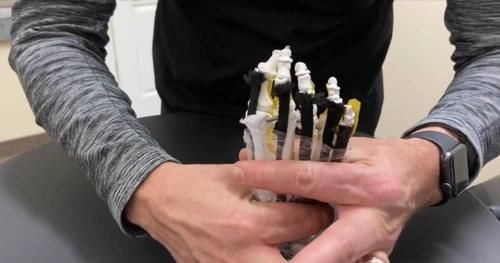- · 《临床神经外科杂志》期[01/26]
- · 《临床神经外科杂志》投[01/26]
- · 临床神经外科杂志版面费[01/26]
腿长不等的评估、临床意义和神经调控康复治疗(2)
作者:网站采编关键词:
摘要:12. Joint variability 关节可变性 (1)Optimal 最佳: Chaotic structure, healthy State of movement. Forces are absorbed and dispersed correctly.混乱性结构,健康的运动状态。力被正
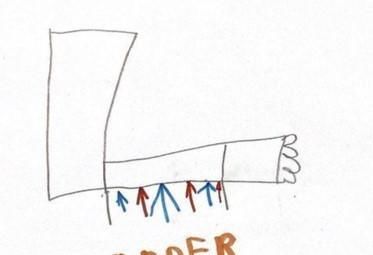
12. Joint variability 关节可变性
(1)Optimal 最佳:
Chaotic structure, healthy State of movement. Forces are absorbed and dispersed correctly.混乱性结构,健康的运动状态。力被正确吸收和分散。
(2)Rigid 僵硬:
Stiff, repetitive, unchanging ie. Limpling.僵硬、反复、不变的,即跛行。(退变、融合关节)
(3)Greater than optimal 大于最佳
Unpredictable, an injured ankle that provides incorrect proprioceptive info after trauma.不可预测,受伤踝在创伤后提供不正确的本体感觉信息。
13. Entry points of energy 能量进入点
Direction of movement that joints encounter during a primary movement. Ie: during shoulder flexion the joint slides slightly before going into flexion.关节在一个主要运动中的运动方向。即:在肩关节屈曲时,关节轻微滑动,然后进入屈曲。
This slide is referred to as an accessory movement 这里指附属运动。
As entry joint points become injured they reduce their ability to use accessory movement resulting in the abnormal absorption and dispersement of energy along the kinetic chain.当进入关节点受损伤时,它们降低了它们使用附属运动的能力——导致沿动力学链的能量异常吸收和分散。
Under normal circumstances, walking should be a unique and different movement with every step 在正常情况下,走路的每一步应该是一种独特而不同的运动。
14. Assessment of LLD 腿长不等的评估
(1)How to measure structural LLD 如何测量结构性LLD
Length of leg: from ASIS to medial malleolus 腿长:从ASIS到内踝
Determine if femur is longer from positioning yourself on the side of the table 确定股骨是否较长,自己在床侧
Determine if the tibia is longer from positioning yourself at the foot of the table 确定胫骨是否较长,自己在足侧
(2)Measuring true LLD 测量真正的LLD
腿长:ASIS,内踝中点
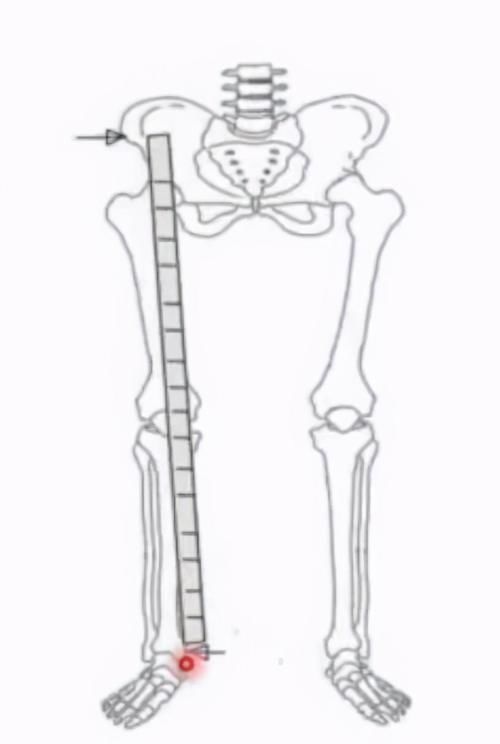
(3)Comparing femur to tibia in LLD 腿长不等时比较股骨到胫骨
Side view 侧面观
股骨:立膝,双足平,站床侧,尺放膝前,股骨长侧伸出
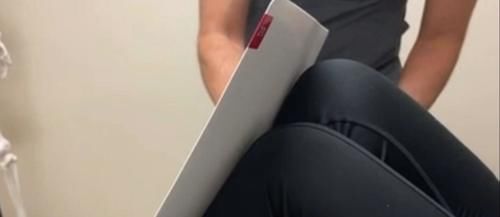
Foot table view 床尾观
胫骨:站足侧,双足平,尺放膝上,高侧胫骨长
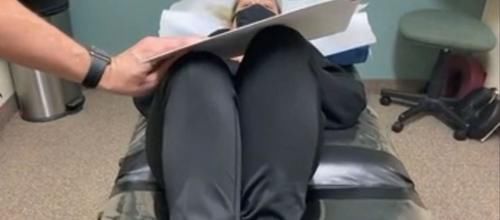
15. Gait in leg length discrepancy 在腿长不等中的步态
(1)GAIT ASSESSMENT 步态评估:
1. GENERAL SYMMETRY/ASYMMETRY 全身对称性/非对称性(一侧肩低,跛行)
2. ARM SWING/STRIDE Length 手臂摆动/步幅(平衡/本体感觉下降,手臂摆动/步幅下降)
3. FLOW/RHYTHM OF GAIT 步态的流畅/节律(特别治疗后)
(2)Observing the effects of uneven gait 观察不均匀步态的影响
Changes in posture due to adaptation 因适应而改变姿势
Increased forces on joints in the shorter leg 在短腿的关节上增加力量
Adaptive gait in the frontal 在额状面的适应性步态
Alternation of stride length and arm swing 跨步长度和手臂摆动的替代
(3)演示
手臂摆动下降。
短腿:1英寸
增加手臂摆动,改善平衡;步幅增加;旋转代偿。
后筋膜链与后斜向筋膜链交汇。
右短腿引起左ST抑制或功能障碍。
(短腿对步态的影响)
16. lower extremity stability 下肢-稳定性
Hip flexors 髋屈肌群:Psoas 腰大肌(紧张,腿长变短);Iliacus 髂肌;Pectineus 耻骨肌
Abductors 外展肌群(抑制:适应性,足跟垫):TFL 阔筋膜张肌;Glut med 臀中肌;Glut min 臀小肌
内收肌群:5长/短收肌;30大收肌
Extensors伸肌: Glut max 臀大肌
腹斜肌:内斜/外斜
(如何快速评估下半身功能(活动性和稳定性)?)
17. ACCESSORY MOVEMENTS = JOINT GLIDE 附属运动=关节滑动(骨间运动,运动前滑动)
Sagittal 矢状面:前后
Transverse 横断面:侧向
Frontal 额状面:上下
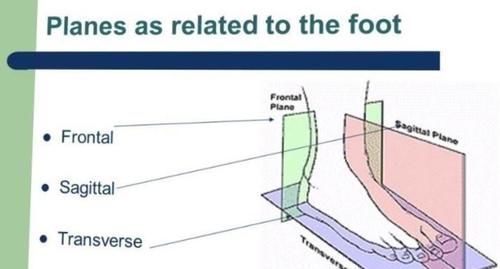
18. ASSESSMENT GUIDE OF ACCESSORY GLIDE 附属滑动的评估指南
FLEXION/EXTENSION & INVERSION/EVERSION 屈曲/伸展和内翻/外翻
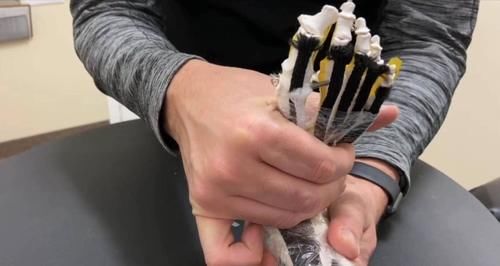
FRONTAL PLAY 额状面滑动
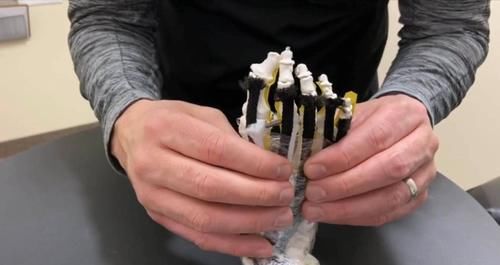
TORSIONAL PLAY 扭转滑动(踝至中足)
临床神经外科杂志投稿 | 临床神经外科杂志编辑部| 临床神经外科杂志版面费 | 临床神经外科杂志论文发表 | 临床神经外科杂志最新目录
Copyright © 2019 《临床神经外科杂志》杂志社 版权所有
投稿电话: 投稿邮箱:
